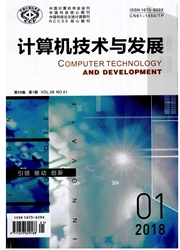

 中文摘要:
中文摘要:
三维形状恢复是计算机视觉领域的热点之一。目前基于Shape—From—Shading(SFS)的三维形状恢复方法采用描述漫反射的Lambertian模型,其数学形式简单,但重构结果与实际有较大差距。文中提出了一种基于Phong模型的多幅图像SFS三维形状恢复算法,该模型是一种典型的描述镜面反射的非Lambertian模型。首先由摄象机获得单目三幅不同光源位置的图像。然后求解由Phong模型描述的三个反射图方程,得到物体表面梯度向量。进一步利用灰度约束和梯度分量约束条件构造目标泛函,建立相应的Eulor—Poision方程并采用离散差分近似微分运算,得到物体表面三维形状恢复的迭代算法。提出的算法利用三幅图像的灰度值建立方程组,求得唯一确定的表面梯度数值,解决了传统单幅图像恢复三维形状的病态问题。同时基于非I.ambertian模型建立反射图方程,可对含有镜面反射的表面进行三维形状恢复。最后通过仿真实验说明算法的有效性。
 英文摘要:
英文摘要:
Three-dimensional (3-D) shape reconstruction is one of the main problems in the field of computer vision. Most existing Shape-From-Shading (SFS) methods are based on the Lambertian reflectance model. The mathematical form of Lambertian reflectance model is simple,but reconstruction results of corresponding algorithms are relative poor compared with real 3-D shape of surfaces. New SFS algorithm based on the Phong model to reconstruct 3D shape of surface is proposed in this paper. The Phong model is a typicai kind of non-Lambertian model to describe specular reflection. Three images with different light source directions are captured by camera first- ly. Following three reflectance map equations which are described by Phong model are established. Then the gradient vectors of the 3-D surface are calculated by solving the equations. The gray constraint and gradient component constraint conditions are used to construct tar- get function, and the corresponding Eulor-Poision equations are derived. Simultaneously, discrete difference is used to approximate differ- entiai operation. New iterative 3-D shape reconstruction algorithm is proposed by the discrete difference equation. Three pixels values are used to solve certain gradient value in this method. So the ill-posed problem in traditional SFS which solves a single reflectance map e- quation can be avoided. At the same time, the algorithm solves the reflectance map equations which based on non-l,ambertian model. So the proposed method can reconstruct 3D shape of surface containing specular reflection. At last, experimental results of 3-D reconstruction show that the proposed method is effective.
 同期刊论文项目
同期刊论文项目
 同项目期刊论文
同项目期刊论文
 期刊信息
期刊信息
